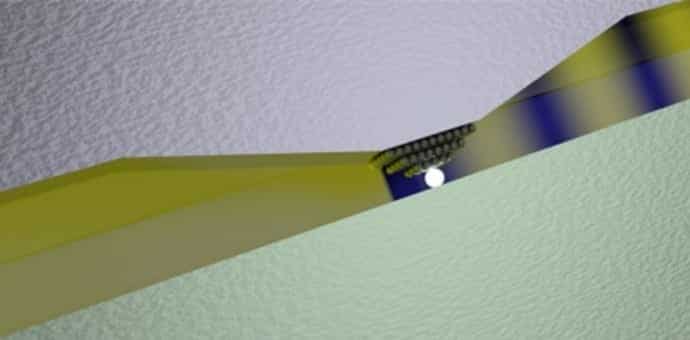Physicists develop the world’s smallest optical switch using a single atom
Researchers at ETH Zurich in Switzerland have developed the equivalent of a single-atom photonic transistor by fabricating the world’s first single-atom optical switch to meet the exponential growth of data and faster transmission.
The scientists have developed the world’s smallest optical switch using a single atom and a modulator that is significantly smaller than the wavelength of light used in the system. This device converts information originally available in electrical form into optical signals. They do this by turning a laser on and off at the frequency of an incoming signal, thereby “modulating” the light to create an optical replication of the input transmission.
Incorporated in data centers in the tens of thousands across the world, modulators are relatively large as far as electronic devices are concerned. Currently, around 3 cm wide, the disadvantage of being large is that they take up a great deal of space when used in large numbers. However, if they are to be useful in future photonics-based devices, their size needs to be significantly reduced.
Developed by Professor Jürg Leuthold and his colleagues at ETH Zurich, the optical modulator operates at the level of individual atoms. In fact, the modulator is significantly smaller than the wavelength of light used in the system.
In telecommunications, optical signals are transmitted using laser light with a wavelength of 1.55 micrometers. Normally, an optical device cannot be smaller than the wavelength it should process.
Here’s how it works: silver and platinum pads are placed on top of an optical waveguide made of silicon with just an atom’s gap between them. Once voltage is applied to the silver pad, a single atom is drawn towards its furthermost point, closing up the gap and creating a circuit between the two pads. This makes it a switch as it flips and the state changes from ‘on’ to ‘off’ or vice versa. As soon as the voltage falls below a certain threshold again, a silver atom moves back and the process is repeated a million times.
As the light is beamed across the waveguide, it gets converted into surface plasmon, made up of electrons that oscillate at the frequency of the laser light. These electrons can pass through the single atom gap before being reconverted on the other side. By reconfiguring the design of the modulator, the light is effectively squashed to squeeze through the gap.
“Until recently, even I thought it was impossible for us to undercut this limit,” said lead researcher, Jürg Leuthold.
Using a high-performance computer, the researchers simulated the system that further allowed them to confirm that the short circuit at the tip of the silver point is brought about by a single atom.
As the plasmon has no other option than to pass through the bottleneck either completely or not at all, this makes it a truly digital signal – a one or a zero. “This allows us to create a digital switch, as with a transistor. We have been looking for a solution like this for a long time,” summarizes Leuthold.
While the researchers admit that the device is not yet ready for series production, Leuthold says that he has full confidence that this device could be possible in a few years with the introduction of 10-nm lithography.
Even though it has the advantage of operating at room temperature, unlike other devices that work using quantum effects at this order of magnitude, it still remains very slow for a modulator: so far, it only works for switching frequencies in the megahertz range or below. The ETH researchers want to fine-tune it for frequencies in the gigahertz to terahertz range.
Now, the team wants to improve the modulator production process so it’s suitable for large-scale use and reliable in operation. At present, fabrication is only successful in one out of every six attempts.
In order to continue his research into the nanomodulator, Leuthold has strengthened his team. However, he points out that greater resources would be required to develop a commercially available solution. In spite of this, the ETH professor is confident that he and his team will be able to present a practical solution within the next few years.
The results of this research were recently published in the journal Nano Letters.

